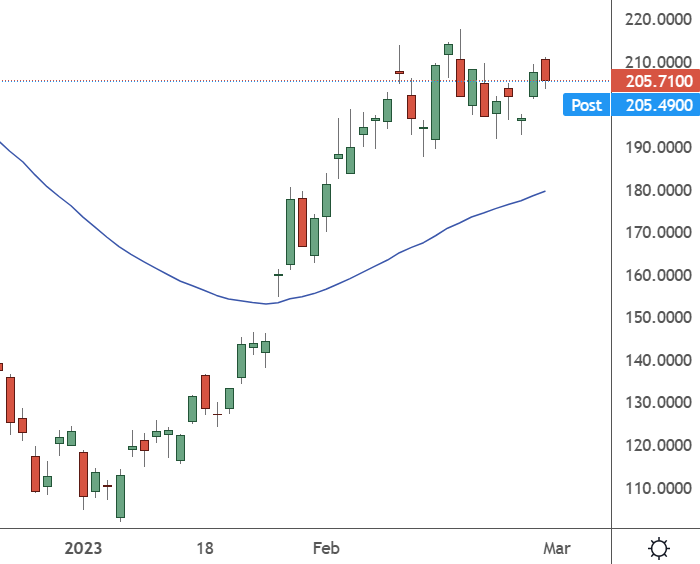Tesla (TSLA) has its 2023 investor day on Wednesday, March 1, which will be live-streamed from its Texas Gigafactory.

TSLA – Daily Chart
After a steep rally, Tesla stock has found some resistance at the $210 level, and there is a tight range in play with the $190 level. Traders should focus on a breakout of those levels for the path ahead.
Elon Musk mentioned the company’s “Master Plan 3,” which he tweeted would be a “path to a fully sustainable energy future for Earth.” Musk has said the event is for “people and life of earth,” adding that “it will be a message of good hope & positivity for the future.”
The first master plan involved the company’s path to profitability from 2006. The second stage was the pickup truck development, so investors hoped for something exciting. Some updates on the delayed cyber truck will be likely, but Tesla may update on previous plans for robo-taxis. Musk said self-driving vehicles would be cheaper than public transport.
Musk previously announced an ambitious target of producing 20 million vehicles annually. He added that it would require a dozen new Gigafactories. This week, Mexican President Andres Manuel Lopez Obrador shared that Tesla will build a factory in Monterrey, Mexico. Canada, Indonesia, and India also lobby the company to provide facilities in their respective countries.
How Does The Future Look For Tesla?
However, Tesla can’t produce 20 million vehicles annually by 2030 without a cheaper EV to reach new buyers at a lower price point. Tesla could present investors with a design for a generation 3 vehicle.
“While recent global price cuts have driven demand, TSLA likely needs Gen 3 to maintain its 50% delivery CAGR (compound annual growth rate),” Wells Fargo analyst Colin Langan wrote in a note last week.
“Gen 3 is expected to be $30K, so TSLA would cover ~95% of US price points; $30K EV that is as profitable as a comparable ICE model, likely drives more near-term momentum; therefore, credible profit/cost targets & launch timing are key.”
It should be noted that Tesla only has an annual capacity of 1.9 million vehicles annually, so investors will be keen to see how they will fund the new factories, which could cost hundreds of billions of dollars for manufacturing and batteries.


